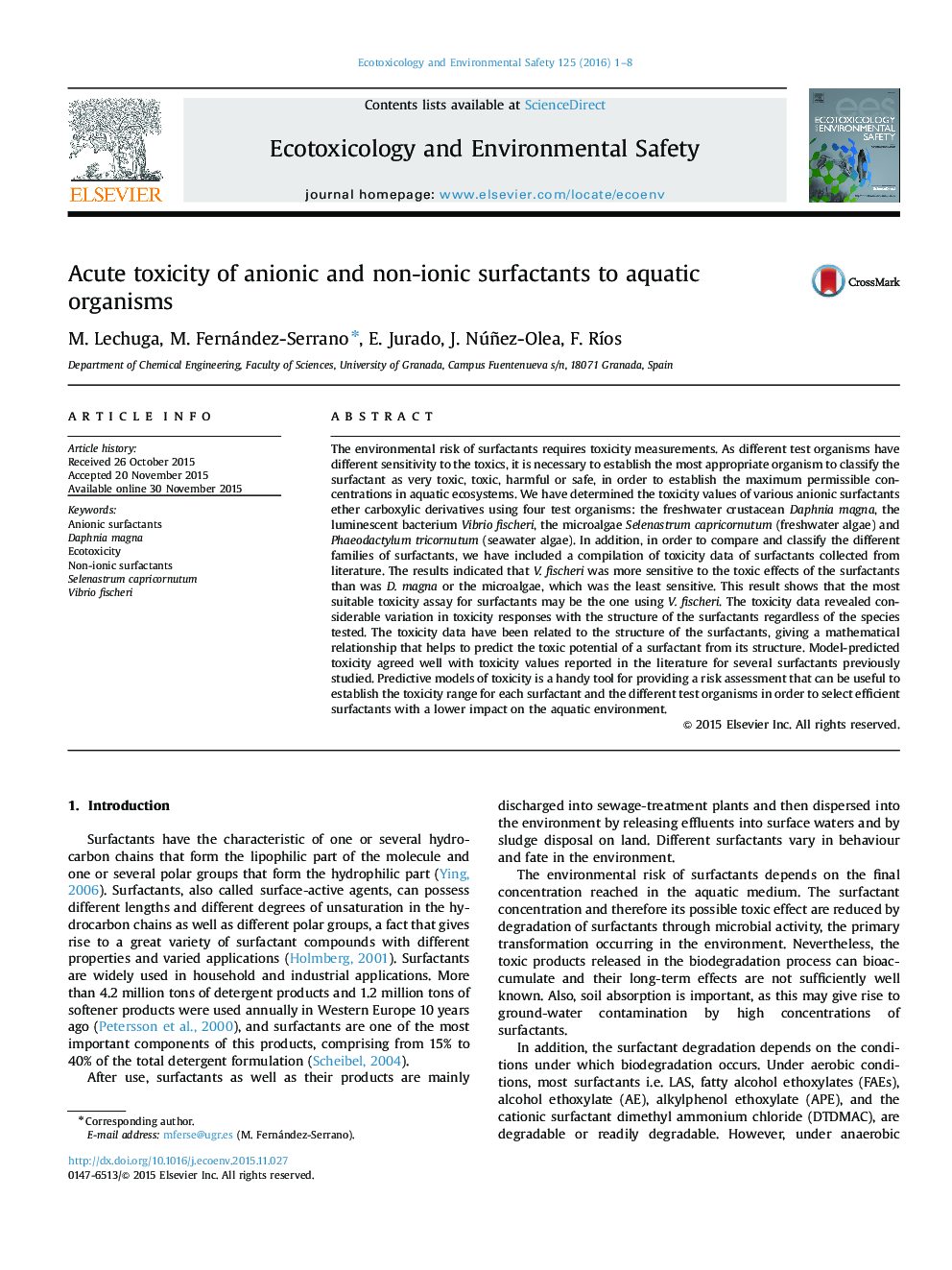| کد مقاله | کد نشریه | سال انتشار | مقاله انگلیسی | نسخه تمام متن |
|---|---|---|---|---|
| 4419434 | 1618938 | 2016 | 8 صفحه PDF | دانلود رایگان |
• The V. fischeri test is proposed as the most suitable toxicity assay for surfactants.
• The toxicity data have been related to the structure of the surfactants.
• The predicted values from SAR models are compared to reported values in the literature.
• A mathematical relationship that helps to predict the toxic potential of surfactants has been obtained.
The environmental risk of surfactants requires toxicity measurements. As different test organisms have different sensitivity to the toxics, it is necessary to establish the most appropriate organism to classify the surfactant as very toxic, toxic, harmful or safe, in order to establish the maximum permissible concentrations in aquatic ecosystems. We have determined the toxicity values of various anionic surfactants ether carboxylic derivatives using four test organisms: the freshwater crustacean Daphnia magna, the luminescent bacterium Vibrio fischeri, the microalgae Selenastrum capricornutum (freshwater algae) and Phaeodactylum tricornutum (seawater algae). In addition, in order to compare and classify the different families of surfactants, we have included a compilation of toxicity data of surfactants collected from literature. The results indicated that V. fischeri was more sensitive to the toxic effects of the surfactants than was D. magna or the microalgae, which was the least sensitive. This result shows that the most suitable toxicity assay for surfactants may be the one using V. fischeri. The toxicity data revealed considerable variation in toxicity responses with the structure of the surfactants regardless of the species tested. The toxicity data have been related to the structure of the surfactants, giving a mathematical relationship that helps to predict the toxic potential of a surfactant from its structure. Model-predicted toxicity agreed well with toxicity values reported in the literature for several surfactants previously studied. Predictive models of toxicity is a handy tool for providing a risk assessment that can be useful to establish the toxicity range for each surfactant and the different test organisms in order to select efficient surfactants with a lower impact on the aquatic environment.
Journal: Ecotoxicology and Environmental Safety - Volume 125, March 2016, Pages 1–8
